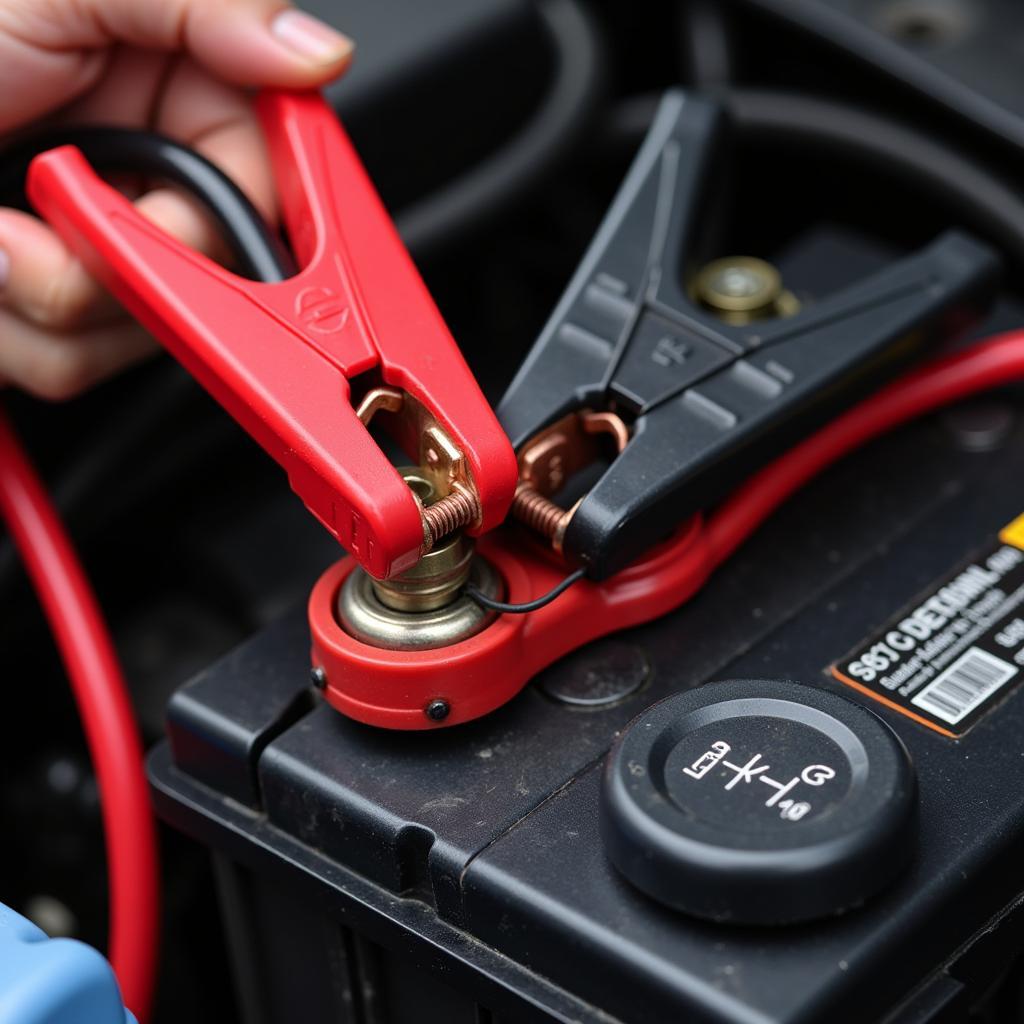Modern vehicles heavily rely on complex electrical and computer systems for operation and performance. When these systems malfunction, it can lead to frustrating and often perplexing problems. This guide will delve into common electrical and computer issues in cars, helping you understand the causes, symptoms, and possible solutions.
Understanding the Electrical System in Your Car
Your car’s electrical system is essentially its nervous system, responsible for everything from starting the engine and powering the lights to managing the entertainment system and safety features. A network of components work together to ensure this system runs smoothly, including:
- Battery: The heart of the system, storing electrical energy and supplying it to various components.
- Alternator: This component generates electricity while the engine is running, recharging the battery and powering the electrical system.
- Starter: The starter draws a large amount of power from the battery to crank the engine and get it started.
- Wiring Harness: A complex network of wires that carry electrical signals and power throughout the vehicle.
- Fuses and Relays: These act as safety devices, protecting circuits from overloads and short circuits.
- Sensors: Numerous sensors throughout the car gather data and send it to the ECU, enabling the car to monitor its performance and adjust accordingly.
- ECU (Engine Control Unit): The brain of the car, processing data from various sensors and controlling engine and transmission functions.
Common Electrical or Computer Problems in Cars
A malfunction in any part of this intricate network can lead to a range of issues. Recognizing the symptoms can help you pinpoint the source of the problem:
1. Car Won’t Start
This is a classic sign of electrical trouble. Possible causes include:
- Dead Battery: The most common culprit, often due to old age, extreme temperatures, or leaving lights on.
- Faulty Alternator: If the alternator fails to charge the battery, the car will eventually lose power and die.
- Starter Motor Failure: A worn-out starter motor might produce a clicking sound when you turn the key.
- Ignition Switch Problems: A faulty ignition switch can prevent power from reaching the starter.
 Car Battery Jumpstart
Car Battery Jumpstart
2. Dim or Flickering Lights
- Failing Battery or Alternator: Inadequate power supply can cause lights to dim, especially during idling.
- Loose or Corroded Wiring: Poor connections can disrupt the flow of electricity, leading to flickering lights.
- Faulty Voltage Regulator: The voltage regulator maintains a steady voltage from the alternator. If it fails, lights might fluctuate in brightness.
3. Dashboard Warning Lights
Modern cars have numerous warning lights that illuminate on the dashboard to alert you of potential problems. Pay close attention to:
- Check Engine Light: This light can indicate a wide range of issues, from minor sensor problems to serious engine malfunctions. Don’t ignore this light!
- Battery Light: This light usually indicates a problem with the charging system, such as a faulty alternator.
- ABS Light: The Anti-lock Braking System (ABS) light warns of a potential issue with the ABS, which helps prevent wheels from locking up during braking.
4. Malfunctioning Electronics
As cars become increasingly reliant on computer systems, electronic glitches are becoming more prevalent. These can include:
- Infotainment System Problems: Issues with the radio, navigation, Bluetooth, or other in-car entertainment features.
- Power Window or Door Lock Malfunctions: Electrical problems can disrupt the operation of power windows, door locks, and other convenience features.
- Sensor Errors: Faulty sensors can disrupt various systems, including engine control, transmission, airbags, and more.
5. Short Circuits and Electrical Fires
While less common, these issues are potentially dangerous and require immediate attention.
- Burning Smell: A burning odor coming from under the hood or inside the cabin could indicate an electrical fire.
- Overheating Wires or Components: Excessive heat from electrical components is a warning sign of a potential fire hazard.
- Fuses Blowing Repeatedly: If a fuse blows shortly after being replaced, it indicates a short circuit or overload in that circuit.
“Electrical issues, if left unchecked, can snowball into bigger, more expensive problems. It’s crucial to address them as soon as you notice any signs of trouble.” – John Miller, Senior Automotive Electrician
Troubleshooting Electrical or Computer Problems
While some electrical issues require specialized tools and expertise, there are a few basic troubleshooting steps you can take:
- Check the Battery Connections: Ensure the battery terminals are clean, tight, and free of corrosion.
- Inspect the Fuses: Locate the fuse box and check if any fuses are blown. Replace blown fuses with ones of the correct amperage.
- Consult the Owner’s Manual: Your owner’s manual can provide valuable information about your car’s electrical system and troubleshooting tips specific to your model.
- Use a Code Reader: An OBD-II code reader can help identify the source of the problem by reading diagnostic trouble codes stored in the car’s computer.
 Mechanic Using OBD2 Scanner
Mechanic Using OBD2 Scanner
When to Seek Professional Help
If you are unable to identify or resolve the electrical problem yourself, it’s essential to seek help from a qualified automotive electrician or mechanic. They have the knowledge, experience, and specialized tools to diagnose and repair complex electrical and computer issues effectively.
“Modern vehicles are becoming increasingly sophisticated. When dealing with electrical or computer problems, it’s often best to leave it to the professionals to avoid further damage.” – Sarah Chen, Certified Automotive Technician
Conclusion
Electrical and computer problems in cars can range from minor inconveniences to major headaches. Understanding the common causes, recognizing the symptoms, and knowing when to seek professional help can save you time, money, and potential safety hazards down the road.
Need help with electrical or computer problems in your car? Contact us at AutoTipPro at +1 (641) 206-8880 or visit our office at 500 N St Mary’s St, San Antonio, TX 78205, United States. Our team of expert technicians is here to assist you.






Leave a Reply